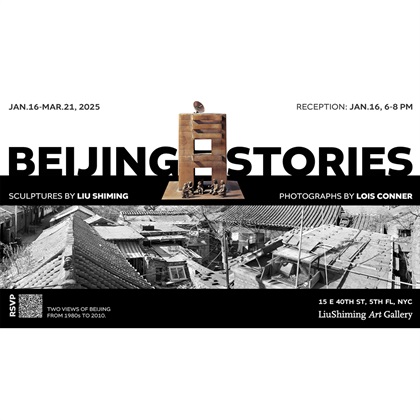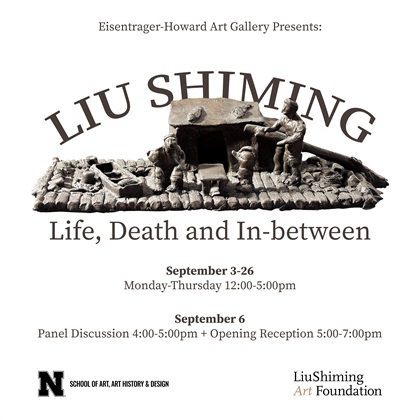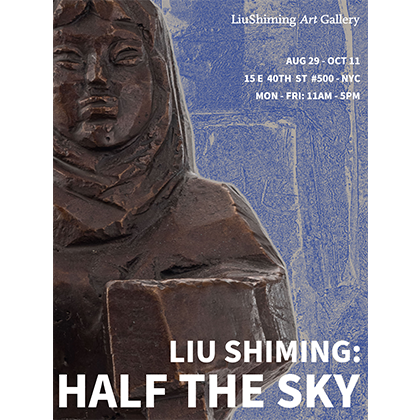On 6 September 2023, following the opening of the exhibition, “Life Gives Beauty Form”, at the Mason Gross School of the Arts at Rutgers University in New Jersey, USA, the panel discussion on Liu Shiming’s Sculptures and Legacy organized by Department of Art & Design, Rutgers University was held.
Jason Geary, Dean of the Mason Gross School of the Arts at Rutgers University, Marc Handelman, Associate Professor and Department Chair in the Mason Gross School of the Arts at Rutgers University, John Yau, Professor of Critical Studies in the Department of Art and Design, and Tamara Sears, Associate Professor of Art History, were invited to speak in the panel discussion, which was moderated by Fran Kaufman, Curator of the Foundation and Partner at KV Projects.
During the panel discussion, Jason Geary, Dean of the Mason Gross School of the Arts at Rutgers University, expressed that he was struck by the enchanting sculptures of Liu, which exuded a humanistic warmth and drew the audience in. This had much to do with the themes that interested Liu in his own life. Whether it was village life or something else, they explored the extraordinary in the ordinary. This spirit, according to Geary, was perfectly reflected in these infectious works. The core mission of Mason Gross was to educate and provide opportunities to learn about the arts. The establishment of the Liu Shiming Scholars Fund further provided the students with the opportunity to pursue their education, realise their dreams, and gain the support from artists and creators that they so desperately need today. The Fund had been instrumental in helping the School to achieve this goal.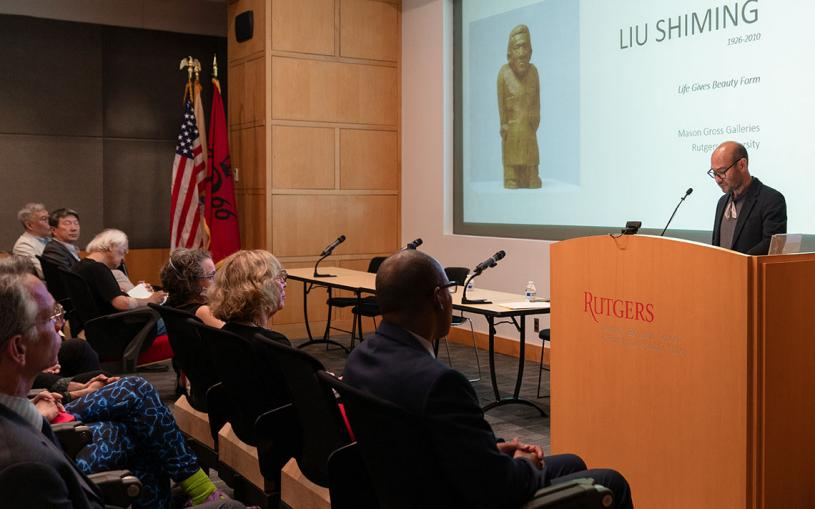
Marc Handelman, Department Chair and Associate Professor of Art at the Mason Gross School of Arts, commented on the large scale of the exhibition, which was an advantage that benefited from the partnership between the School and the Foundation. He believed that the exhibition contributed a new layer of modernist discourse to the international art narrative. From Liu’s perspective, he was deeply rooted in modernism, looking to the future and innovation, and in the meantime, he was deeply connected to tradition, folk art and traditional techniques. Most essentially, Handelman was touched by the emotions, playfulness, intimacy, and also the humour and imagination of these works. Moving through each exhibition space, the viewers kept being pleasantly surprised; just when they felt they had understood a work, a touch, a sense of form, they turned around and they would find a completely different way of expression. In Handelman’s view, these pleasurable and surprising techniques and creative visual presentations manifested in Liu’s life, education, artistic journey, and the stylistic changes in his works. Such stylistic expression was one of the reasons why this exhibition was so vigorous.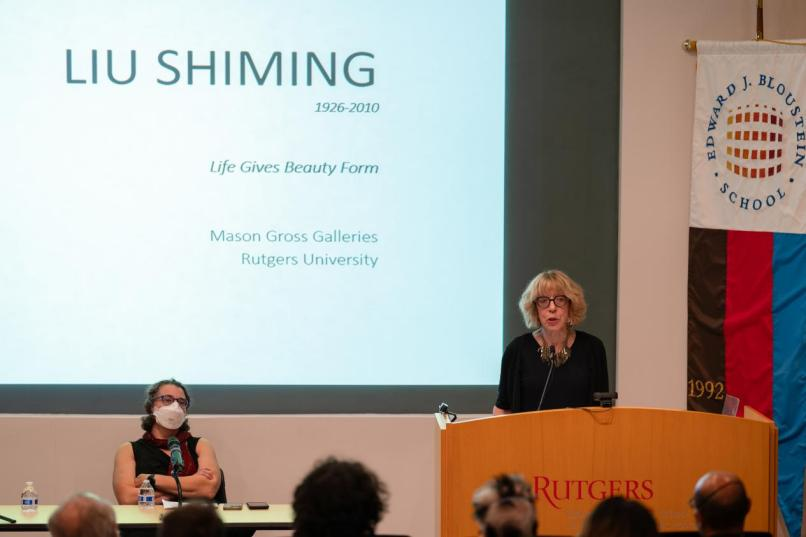
Fran Kaufman, the event’s moderator, the Foundation’s curator and a partner at KV Projects, expressed that she was delighted to be the moderator, and that the exhibition with the panel discussion shall bring some new perspectives on the study of Liu’s life and art, and connect that to the contemporary art world. Kaufman was fully aware of Liu’s deep and strong roots in traditional Chinese culture, particularly the art in the Han Dynasty. Furthermore, Liu’s works were characterised by the representations of everyday life, history, folklore, and religious stories. These two aspects showed his concern and love for Chinese culture, Chinese people and their way of life.
Kaufmann further talked about how Liu was considered one of the most promising young sculptors in China in the 1950s and 1960s. But he made a great decision. He decided to put aside all of his prestige and travelled to the relatively impoverished region of Henan in central China. Although he lived an austere life there, the real-life experience empowered him to develop his artistic creativity. Much of his artistic language and style originated from capturing the most ordinary and simple daily lives of working farmers in Henan mostly, who he saw as beautiful and vigorous. This later became the most important theme of his life-long creation. The year 1974 saw Liu’s return to Beijing to work in the Chinese Museum of History, which enabled him to work closely with ancient artefacts. Here, he learned much about the style of ancient Chinese art. In 1980, he returned to teach at the Central Academy of Fine Arts, where he continued to create until his death in 2010 at the age of 84. He was single-minded in his pursuit of a national sculpture style. He fused the historical connotations of traditional Chinese sculpture with contemporary life. He expressed the changes of the times in a warm and humanistic way, recognising that the most precious emotions were often embedded in ordinary life. Liu held great respect for the most ordinary workers in all walks of life.
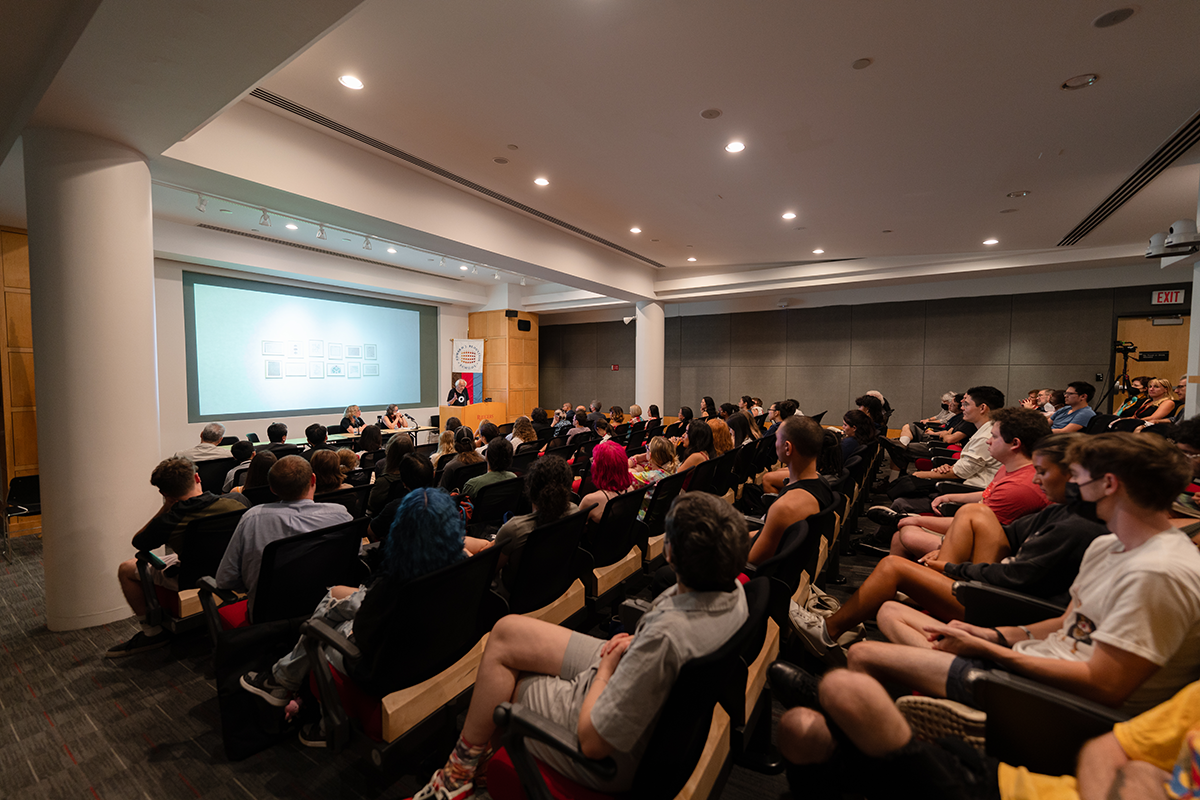 |
View of the panel discussion on Liu Shiming’s sculptures and legacy
Jason Geary, Dean of the Mason Gross School of the Arts at Rutgers University, Marc Handelman, Associate Professor and Department Chair in the Mason Gross School of the Arts at Rutgers University, John Yau, Professor of Critical Studies in the Department of Art and Design, and Tamara Sears, Associate Professor of Art History, were invited to speak in the panel discussion, which was moderated by Fran Kaufman, Curator of the Foundation and Partner at KV Projects.
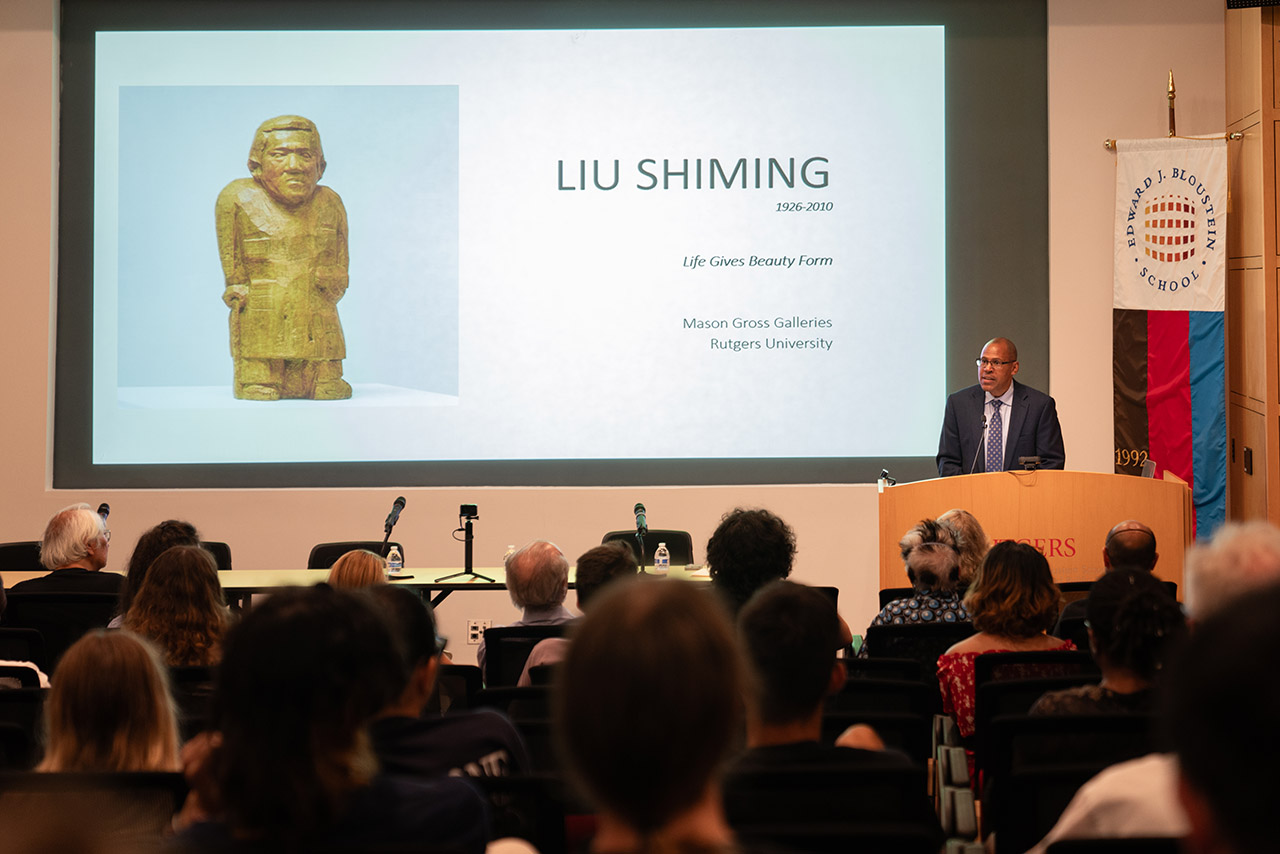 |
Jason Geary, Dean of the Mason Gross School of the Arts and Distinguished Professor of Music at Rutgers University, as well as Senior Vice Provost of Academic Initiatives at Rutgers–New Brunswick, speaking in the panel discussion
During the panel discussion, Jason Geary, Dean of the Mason Gross School of the Arts at Rutgers University, expressed that he was struck by the enchanting sculptures of Liu, which exuded a humanistic warmth and drew the audience in. This had much to do with the themes that interested Liu in his own life. Whether it was village life or something else, they explored the extraordinary in the ordinary. This spirit, according to Geary, was perfectly reflected in these infectious works. The core mission of Mason Gross was to educate and provide opportunities to learn about the arts. The establishment of the Liu Shiming Scholars Fund further provided the students with the opportunity to pursue their education, realise their dreams, and gain the support from artists and creators that they so desperately need today. The Fund had been instrumental in helping the School to achieve this goal.

Marc Handelman, Associate Professor and Department Chair in the Mason Gross School of the Arts at Rutgers University, speaking in the panel discussion
Marc Handelman, Department Chair and Associate Professor of Art at the Mason Gross School of Arts, commented on the large scale of the exhibition, which was an advantage that benefited from the partnership between the School and the Foundation. He believed that the exhibition contributed a new layer of modernist discourse to the international art narrative. From Liu’s perspective, he was deeply rooted in modernism, looking to the future and innovation, and in the meantime, he was deeply connected to tradition, folk art and traditional techniques. Most essentially, Handelman was touched by the emotions, playfulness, intimacy, and also the humour and imagination of these works. Moving through each exhibition space, the viewers kept being pleasantly surprised; just when they felt they had understood a work, a touch, a sense of form, they turned around and they would find a completely different way of expression. In Handelman’s view, these pleasurable and surprising techniques and creative visual presentations manifested in Liu’s life, education, artistic journey, and the stylistic changes in his works. Such stylistic expression was one of the reasons why this exhibition was so vigorous.

Fran Kaufman, Curator of Liu Shiming Art Foundation and Partner at KV Projects, speaking in the panel discussion
Fran Kaufman, the event’s moderator, the Foundation’s curator and a partner at KV Projects, expressed that she was delighted to be the moderator, and that the exhibition with the panel discussion shall bring some new perspectives on the study of Liu’s life and art, and connect that to the contemporary art world. Kaufman was fully aware of Liu’s deep and strong roots in traditional Chinese culture, particularly the art in the Han Dynasty. Furthermore, Liu’s works were characterised by the representations of everyday life, history, folklore, and religious stories. These two aspects showed his concern and love for Chinese culture, Chinese people and their way of life.
Kaufmann further talked about how Liu was considered one of the most promising young sculptors in China in the 1950s and 1960s. But he made a great decision. He decided to put aside all of his prestige and travelled to the relatively impoverished region of Henan in central China. Although he lived an austere life there, the real-life experience empowered him to develop his artistic creativity. Much of his artistic language and style originated from capturing the most ordinary and simple daily lives of working farmers in Henan mostly, who he saw as beautiful and vigorous. This later became the most important theme of his life-long creation. The year 1974 saw Liu’s return to Beijing to work in the Chinese Museum of History, which enabled him to work closely with ancient artefacts. Here, he learned much about the style of ancient Chinese art. In 1980, he returned to teach at the Central Academy of Fine Arts, where he continued to create until his death in 2010 at the age of 84. He was single-minded in his pursuit of a national sculpture style. He fused the historical connotations of traditional Chinese sculpture with contemporary life. He expressed the changes of the times in a warm and humanistic way, recognising that the most precious emotions were often embedded in ordinary life. Liu held great respect for the most ordinary workers in all walks of life.

John Yau, Professor of Critical Studies in the School of Art & Design, speaking in the panel discussion
John Yau, Professor of Critical Studies in the School of Art & Design, analysed the artistic characteristics and international influences of Liu’s work through comparisons with the works of other artists.

Tamara Sears, Associate Professor of Art History, speaking in the panel discussion
Tamara Sears, Associate Professor of Art History, focused on the relationship between modern art and historical traditions. She pointed to Liu’s unique style of artistic expression, inspired by ancient Chinese art forms, as a way of presenting poetic moments of everyday life and the simplest celebrations of the common labourer, which made his work exude exuberance and interesting freshness at times. To Sears, Liu found a link between classical and modern art.
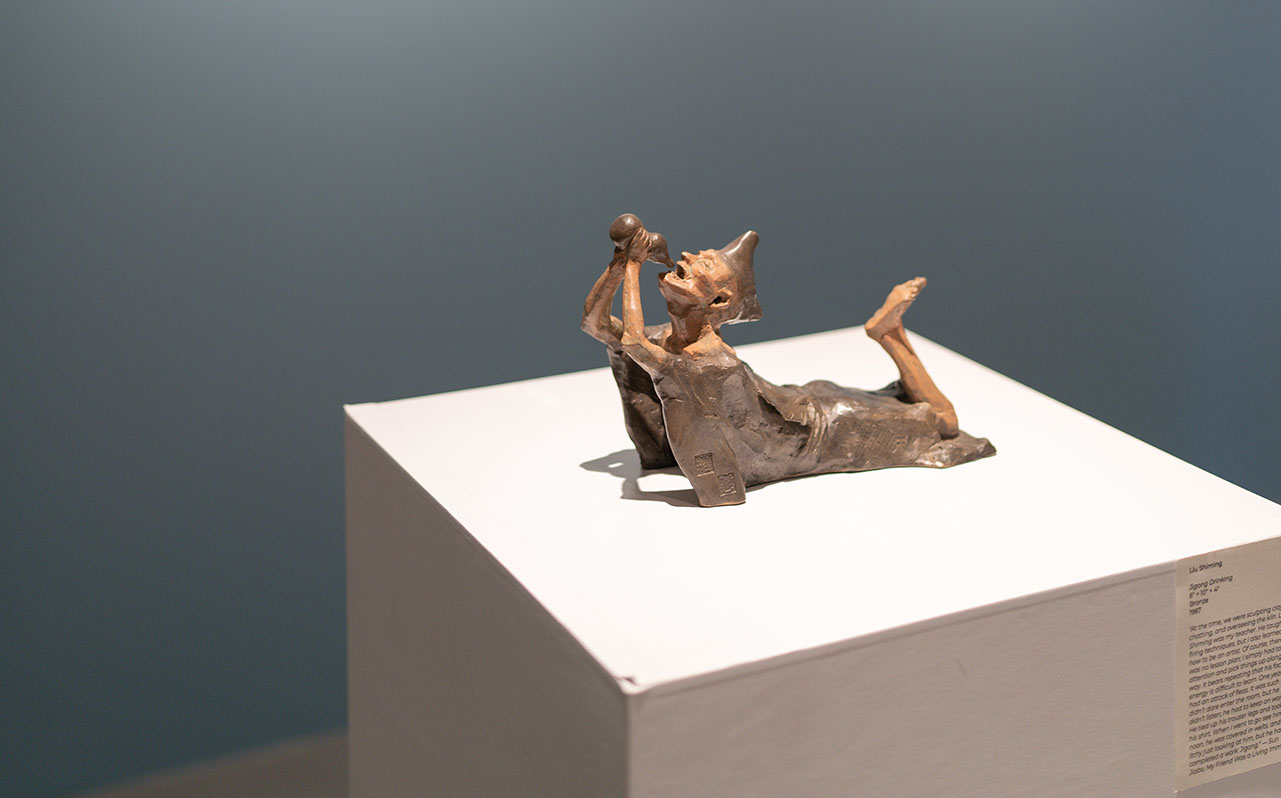
Jigong Drinking, 1985
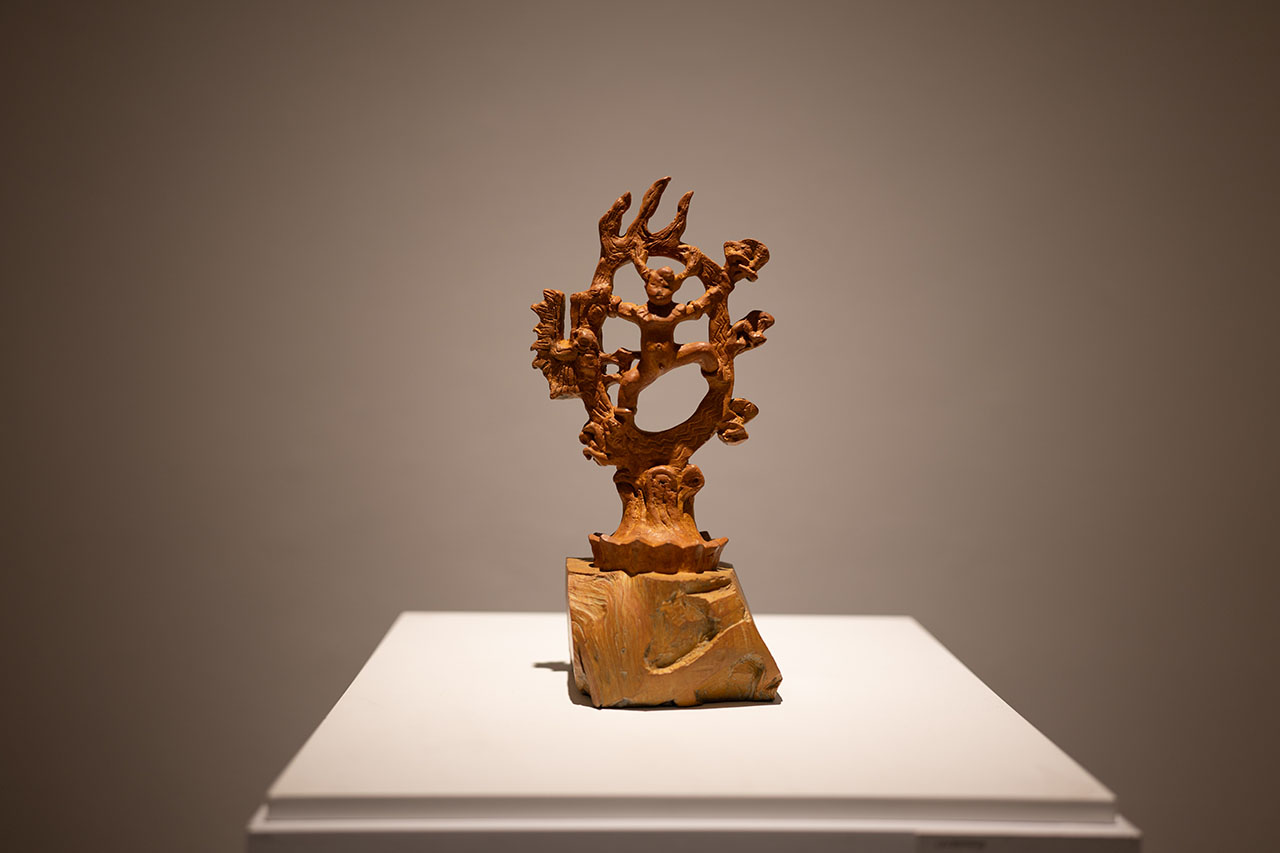 Nezha, 1980
Nezha, 1980
Tiehua Going for Noodles, 1998
Edited by CAFA ART INFO
Image and text courtesy of Liu Shiming Art Foundation

